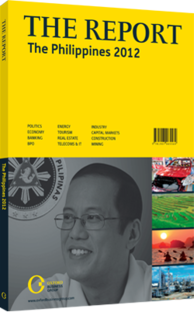OBG talks to Artemio Disini, Chairman, Chamber of Mines of the Philippines

Interview: Artemio Disini
How can the Philippines encourage the development of more downstream and value-added activities within its mining sector?
ARTEMIO DISINI: There is significant potential for the further development of downstream mining operations in the Philippines. A tonne of refined nickel gets three to four times more on the market than a tonne of raw nickel ore, a premium that cannot be ignored. For this industry to develop, government support is necessary.
The Philippines should perhaps look at the system currently being employed in Indonesia, where the export of unprocessed minerals will be banned by 2013. Should the proper steps be taken, such downstream industries will only enhance the level of the mining sector’s contribution to GDP growth and the economy as a whole.
What changes are needed for the Philippines to realise the full potential of its natural resources?
DISINI: For the mining sector to truly thrive it will need the combined efforts of both the public and private sectors. The government must have a clear and stable regulatory environment for the mining sector, and to resolve the current problems between national policy and local governmental units (LGUs). Questions currently remain unresolved about some of the country’s largest mining projects. It is only through the fair and rapid resolution of these issues that the country will continue to attract foreign investors.
The Philippines should also work to simplify the current permit approval process, as mining companies are often required to wait two years to even begin low-impact exploration and feasibility studies. While the industry applauds the “use it or lose it” policy instituted by the government, we see many opportunities to make the process even more efficient, further promoting development and investment in the sector.
Furthermore, there is a need to streamline the tax system. Under the current structure there is often a significant delay before LGUs are apportioned their share of taxes from the national government. By permitting mining companies to pay relevant taxes to LGUs directly, local communities will see considerably more rapid economic and social development from mining activities. This should help alleviate some of the misplaced opposition to mining operations.
Similarly, the mining industry needs to address the gross misunderstanding and misrepresentation of its work. Activists from various camps claim the industry wishes to mine 12m ha in the country, i.e. 40% of the landmass. In reality the total impact area of the large mines will be about 60,000 ha, while the land that will actually be mined totals roughly 8400 ha, or 0.03% of the country’s total landmass.
How will the ongoing peace process in the southern Philippines affect the mining industry’s future?
DISINI: The administration’s efforts to resolve the country’s conflicts are highly lauded by the mining industry, as there is significant potential in some of the areas currently affected by instability, especially Mindanao. The majority of copper, gold and nickel reserves are located in Mindanao, but until now development has been hindered by the lack of security. The industry is now anticipating the drafting of a peace agreement in the next three years, which would free vast tracts of land for further exploration and development.
What can the Philippines do to ensure a steady supply of human capital to fulfil industry demand?
DISINI: In the past, many mining engineers, geologists and metallurgists went abroad to countries perceived as having more potential and where the mining industry was more mature. This has resulted in a significant gap in human resources and a need for additional mining specialists. To address this, players from the industry are working with universities to offer scholarships to study disciplines that are relevant to the sector. Universities have seen increased enrolment in engineering and metallurgy courses, a trend celebrated by the mining industry and one that is expected to continue.
You have reached the limit of premium articles you can view for free.
Choose from the options below to purchase print or digital editions of our Reports. You can also purchase a website subscription giving you unlimited access to all of our Reports online for 12 months.
If you have already purchased this Report or have a website subscription, please login to continue.

